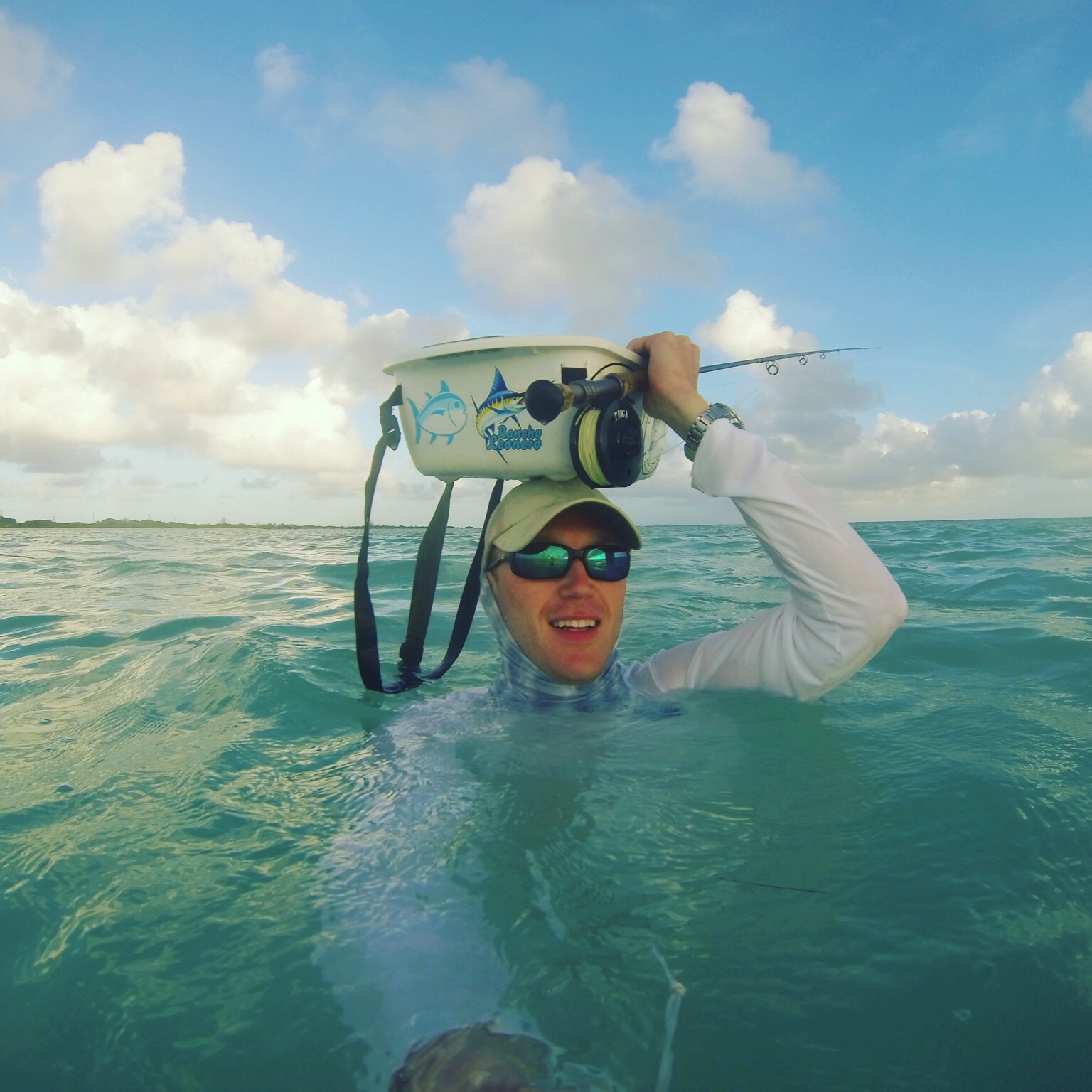***Warning*** – this post contains content associated with conventional fishing tackle, and may not be suitable for all readers.
It’s only my third post and I’ve already deviated away from fly fishing! Purists all over the world are thumbing their noses at me and major sponsors are fleeing. Just kidding.
But let’s be honest, there are fish that simply can’t be pursued with a fly rod. Fly anglers in the past fifty years have made great strides to tame monsters like billfish, school-size tunas, wahoo, musky, and sharks. However, if you consider the lifting power of even the heaviest offshore fly rods, or the maximum drag that can be applied to a 22# tippet, you’re setting yourself up for failure on true leviathans that roam the seas – grander marlin, deep diving bottom dwellers, and most of all, the giant bluefin tuna.
Traditionally, these fish have been pursued with heavy tackle like 130# class reels mounted to broomstick rods fished out of a chair. I’ve fished this way for bluefins before, and while there definitely is some technique to efficient fighting in a chair harness, it’s a huge leap from even a 15-weight rod with a large arbor reel filled with 1000 yards of backing.
Fortunately, a new style of fishing for these giants has made its way from Japan to our shores over the past 10-15 years. Popping and vertical jigging are two related methods that I view as somewhat analogous to fly fishing. Popping uses a long 7.5-8.5’ rod and a spinning reel with a high retrieve ratio to cast poppers, stickbaits, and swimbaits long distances and retrieve them at high speed. Jigging uses a shorter rod, approximately 5-6’ and either a spinning or lightweight conventional reel to drop heavy iron jigs and methodically retrieve them upwards through the water column. Both methods use entirely artificial lures, place a premium on the angler’s presentation technique, and typically involve freestyle standup fish fighting. The rods and reels are of exceptional strength to withstand enormous drag pressure needed to land powerful amberjack, trevally, and tuna, while at the same time being extremely lightweight to allow for the repetitive motions of casting and vertical jigging. Next to fly fishing, I believe it’s the most challenging and sporting way to pursue extremely large fish.


This Saturday I am headed to Hatteras, North Carolina with family and friends for a day of fishing aboard the charter boat Tuna Duck, captained by Dan Rooks. Dan and the Tuna Duck have catered to the jigging and popping crowd over the past decade as anglers from around the world make the pilgrimage to Hatteras Island from February through April for the legendary giant bluefin tuna bite. The fish are anywhere from 200-600 pounds or more, and are more than willing to bite a popper or jig after arriving from a long migration to the bountiful waters just off Diamond Shoals. These fish can run out 400 yards of line against 25 pounds of drag in moments, putting to rest any possibility of targeting them with fly tackle.
We should also have an opportunity to catch smaller yellowfin and blackfin tuna. With an average size of 50# and 20#, respectively, these fish are certainly within the capabilities of modern fly tackle. Blackfins especially are a popular fly target on the offshore humps in the Florida Keys. However, I’m not packing my 14-weight for two reasons. 1 – The wind on the Outer Banks in the winter is always an issue, and I don’t want to be scrambling on the foredeck of a rolling sportfisher in 5’ seas in the dead of winter. 2 – The sharks are never far from schooling tunas, and a prolonged fight on fly tackle is sure to attract their attention. Dock photos from the Outer Banks marinas often show half eaten tunas; it’s sometimes difficult to bring them in with conventional tackle before the tax man takes his bite!
I would like to target blackfins on the fly at some point, but perhaps on a calm day when we can get offshore in my dad’s 27’ center console, which is much easier to cast from than a 50’ sportfisher with a flying bridge and outriggers. For now, we’ll try to fill the fishbox on Saturday using jigging and popping gear, satisfied that this is perhaps the next best way to fish when fly fishing is otherwise impractical. The wind doesn’t look like it will keep us at the harbor, and the charter boats have been putting some nice fish on the dock this week, so wish us luck!
To learn more about these techniques, I suggest wandering over to Saltywatertackle.com. This shop in New Jersey is credited with developing many of the tackle and techniques used at Hatteras for giant bluefins. Their YouTube page shows incredible footage of hooking and fighting these beasts.
